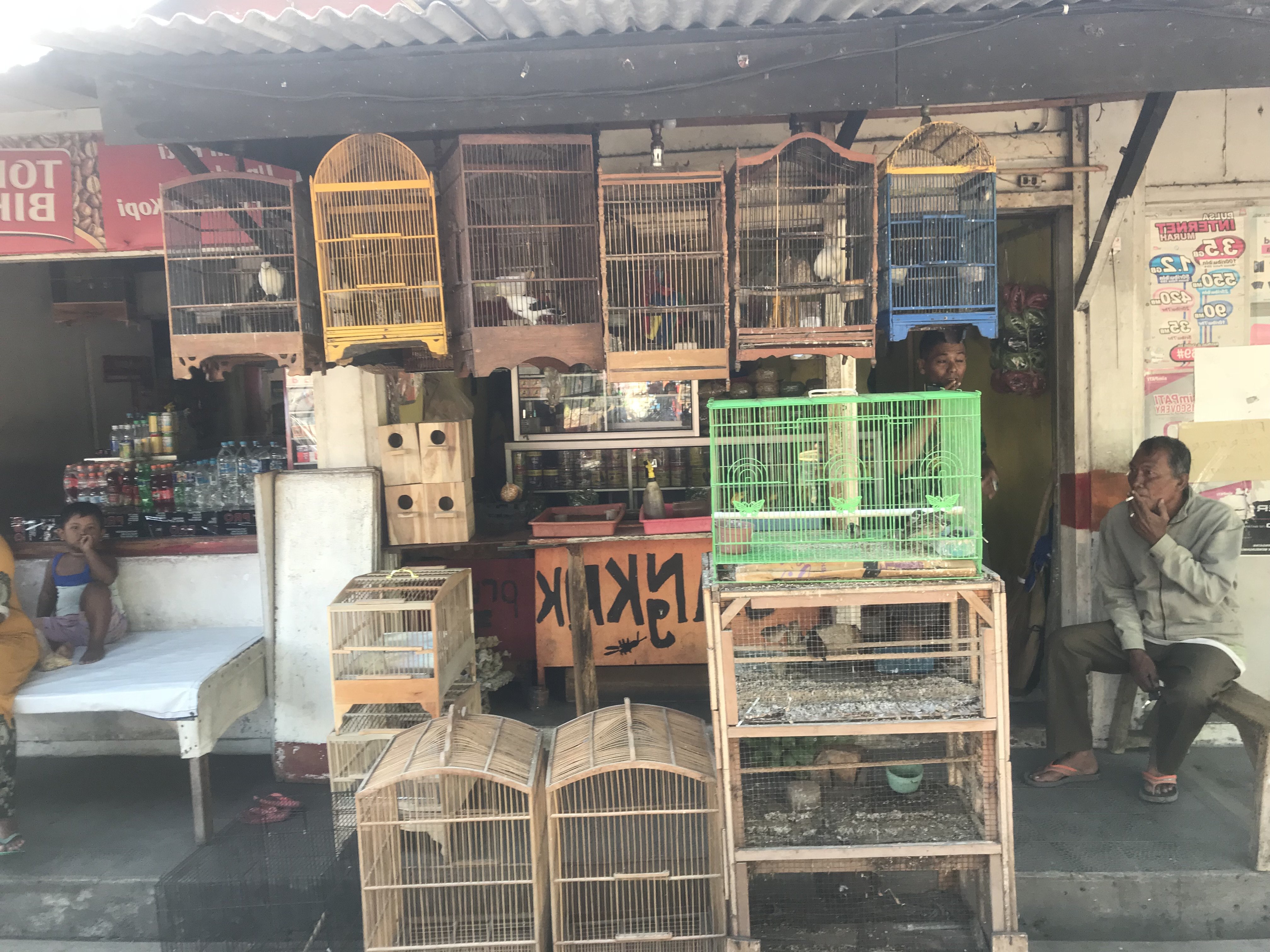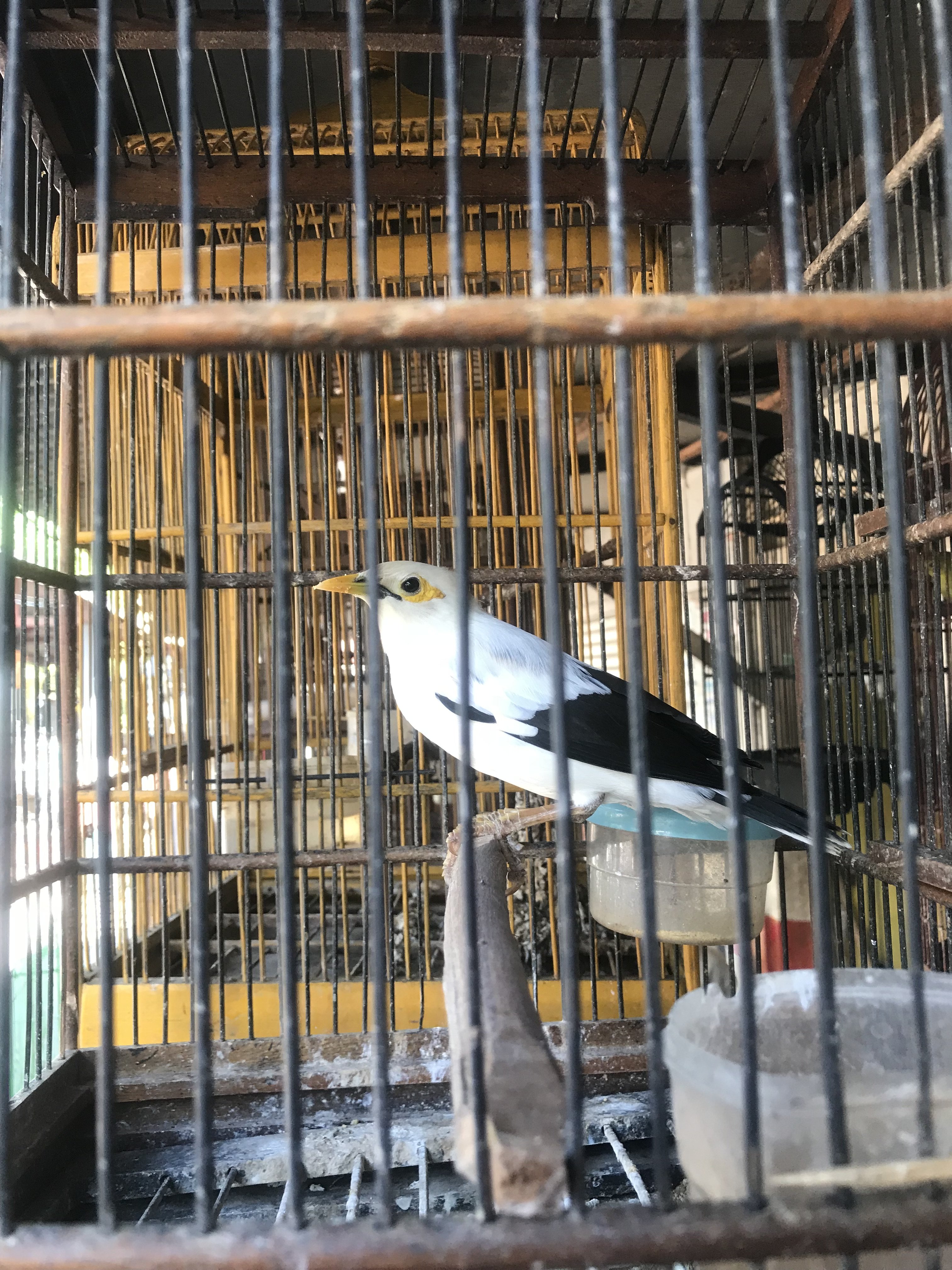In the largest study of its kind, our Little Fireface Project team out of Oxford Brookes University in the UK and Gadjah Madah University in Indonesia. We found that three closely-related Indonesian songbirds are on the brink of extinction due to large numbers having been illegally extracted from the wild for domestic trade. We investigated the trade of black-winged mynas, also known as the black-winged starling, in Indonesian bird markets and online. We assessed the role of captive breeding over the last decade. The article is available open access here.
The study
We conducted over a hundred surveys in bird markets in Java and conducted an online investigation. We observed some 1,250 black-winged starlings for sale. Turnover was high, with 50% of birds being sold after one week of arriving in the market. The research team estimate that over 10,000 mynas are being sold every year in the Indonesian bird markets, at a retail value of close to one million US dollar.
From the team
Vincent Nijman, Professor in Anthropology at Oxford Brookes University and lead author of the study said: “With additional bird markets in Java and Bali and a thriving online trade, we estimate that the number of black-winged starlings in private ownership in Indonesia is in the order of 40,000 birds.”
“Without proper registration and regulation in the trade of captive-bred mynas, even a small amount of wild-caught birds entering this now substantial trade will act as a serious impediment to the conservation of the species.” added Dr Mohammed Imron from Gadjah Madah University in Yogyakarta.
The birds held in the markets were observed to be a combination of captive-bred, first-generation captive-born and wild-caught individuals. Some appeared to be crossbreeds between the three species.
Just 20 years ago, the black-winged mynas were common enough to be listed at Least Concern and could be still easily observed in the wild. Now, global conservation partnership BirdLife International estimates that there may be as few as 50 left in the wild and list it as Critically Endangered.
Professor Nijman continued: “This species is an example of how wildlife trade, in this case domestic trade, can lead to the extinction of a once common species with few people noticing the decline.
“While large-scale capturing and trade in songbirds has been ongoing since at least the 1960s, in recent years it has become clear that trade is the major impediment for the survival of many bird species. I have visited bird markets in Java over 25 years and I have seen the changes in the trade of this songbird first-hand.”
While the black-winged starling or myna is on Indonesia’s protected species list, loopholes allow second-generation birds to be traded.
Thank you to our funders!
UK conservation charity People’s Trust for Endangered Species (PTES) funded this research and has worked alongside Oxford Brookes University for over seven years helping to combat the illegal wildlife trade. In January 2018 Professor Anna Nekaris, co-author of this paper from Oxford Brookes University, became PTES’ fourth Conservation Partner for her work saving slow lorises from the illegal trade in Java, Indonesia.
The paper, Wildlife trade, captive breeding and the imminent extinction of a songbird, is published in Global Ecology and Conservation.
ENDS
For more information, please contact Natalie Gidley, Communications Officer (Media Relations) on 01865 484452 or email pr@brookes.ac.uk
- Images:
- Image 1: A caged black-winged starling or myna. Credit: Evros Damanianou
- Image 2: Black-winged starlings or mynas at a bird market in Probolinggo, East Java. Credit: Evros Damanianou
- Image 3: Black-winged starlings or mynas at a bird market in Mataram, Lombok. Credit: Evros Damanianou


